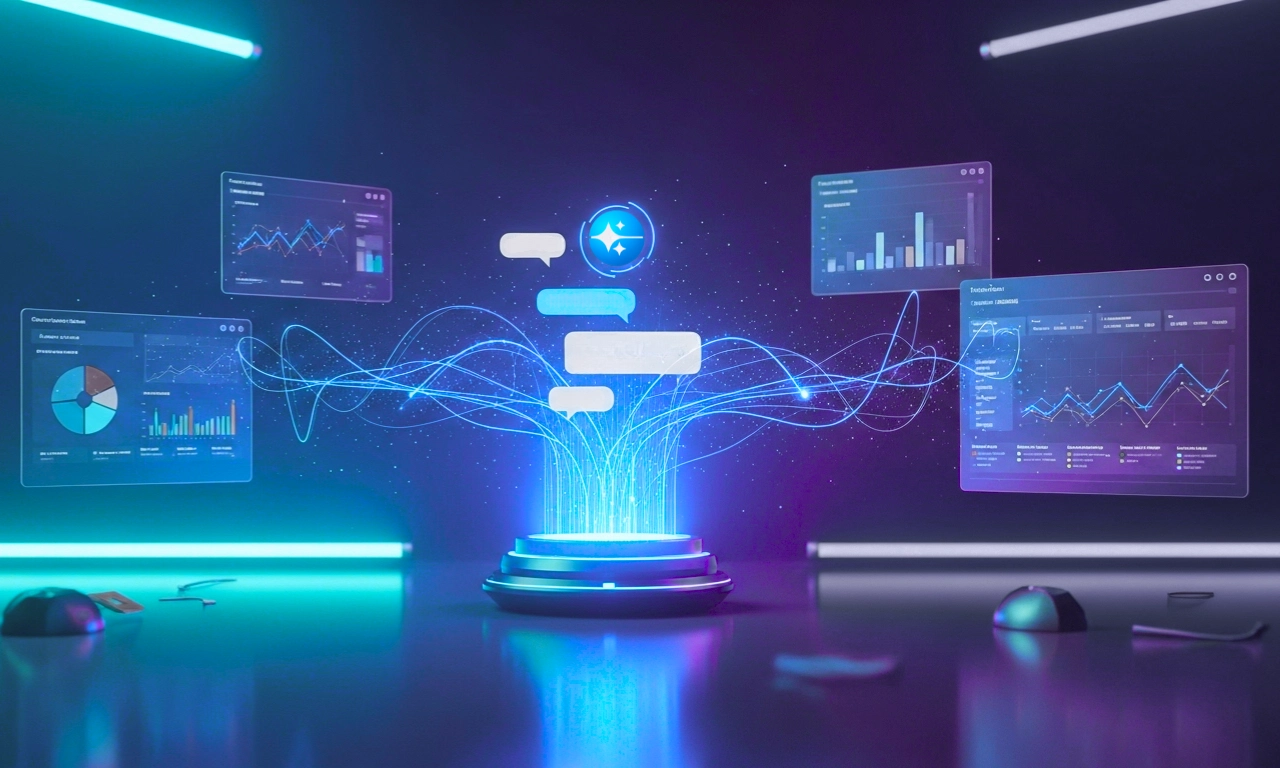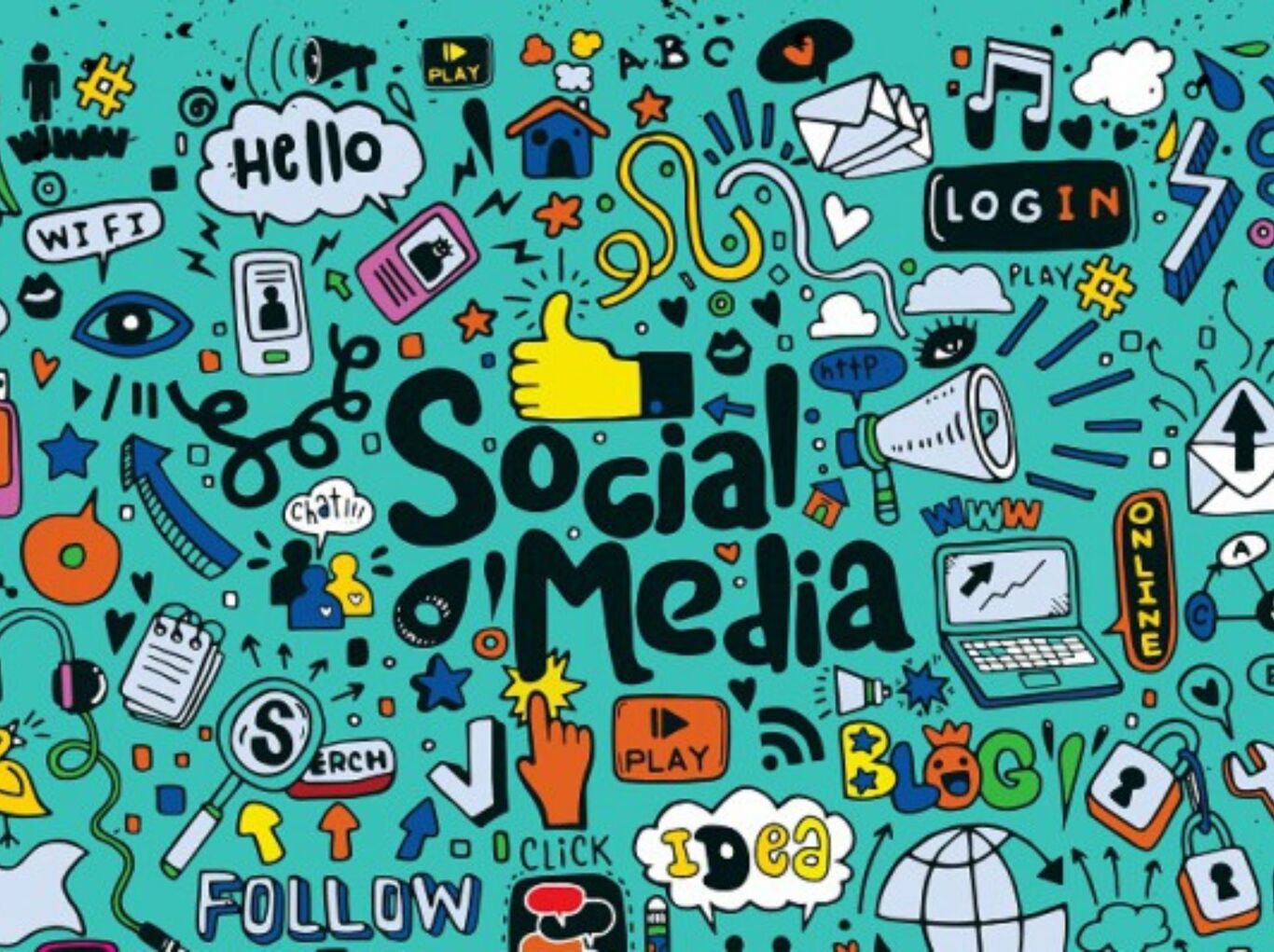What Is Advertising Intelligence? 2025 Definition & Why Every Marketer Needs It

“Advertising intelligence” is one of those phrases that sounds powerful and vague at the same time.
Every tool claims to have it:
- BI tools: “Bring all your data together for marketing intelligence.”
- Data connectors: “Power your advertising intelligence layer.”
- AI tools: “Smart assistant for marketers.”
- Ad platforms: “Built-in intelligence for smarter bids.”
You’re left wondering:
“Is advertising intelligence just analytics with a fancier name? A dashboard? An AI assistant? Or something else entirely?”
In 2015, “intelligence” meant nicer charts.
In 2020, it means some predictions.
In 2025, it means something very specific: a decision system that tells you what to do next with your marketing, and what that decision is likely to achieve.
This article is your 2025-ready definition of advertising intelligence:
-
What it really is
-
How it’s different from analytics, BI, and generic AI
-
The core components of a true advertising intelligence system
-
Real use cases (CAC, ROAS, budget, creatives, crisis response)
-
Why prescriptive systems like Intellsys AdGPT are becoming the default “brain” in modern marketing stacks
Part 1: The 2025 Definition of Advertising Intelligence
Advertising intelligence is the always-on system that turns your multi-channel marketing data into prioritized decisions and actions, tied directly to business outcomes (CAC, ROAS, LTV, revenue).
Three things matter in that definition:
-
It’s a system, not a report.
It combines data, models, and workflows to produce decisions – not just views. -
It’s continuous.
It updates as campaigns run and markets shift, not once a month in a slide deck. -
It ends in actions, not insights.
“ROAS dropped 20%” is analytics.
“Here are the top three moves to recover ROAS and their projected impact” is intelligence.
If your current stack only:
- Aggregates data
- Visualizes it
- Maybe forecasts it
you have analytics. You don’t yet have advertising intelligence.
Part 2: Intelligence vs Analytics vs Dashboards (Simple Distinctions)
A lot of confusion comes from mixing words. Let’s separate them cleanly.
Dashboards = “What happened?”
-
Tools: Looker, Tableau, Power BI, Data Studio, in-platform UI
-
Output: Charts, tables, graphs
-
Questions answered:
-
“What was our ROAS last week?”
-
“How much did we spend by channel?”
-
“Which campaigns drove the most conversions?”
-
Dashboards are rear-view mirrors. Critical for visibility, useless for deciding what to do next on their own.
Analytics = “Why did it happen?” and “What might happen?”
-
Tools: Attribution platforms, churn models, lead scoring, forecasting systems
-
Output: Explanations and predictions
-
Questions answered:
-
“Why did CAC rise?”
-
“Which leads are most likely to convert?”
-
“What will our MRR be next quarter if we keep this pace?”
-
Analytics gives you understanding and foresight. You still need humans to pick a move.
Advertising Intelligence = “What should we do now, and what will it likely achieve?”
-
Tools: Prescriptive advertising platforms like Intellsys AdGPT
-
Output: Prioritized decisions with projected impact
-
Questions answered:
-
“My CAC is up 30%. What should I do?”
-
“How do I split my budget across Meta, Google, and Amazon next week?”
-
“Which audiences and creatives should I scale, and which should I cut?”
-
This is the decision layer:
-
It looks at your live data
-
Diagnoses what’s going on
-
Evaluates multiple options
-
Recommends specific next steps
-
Shows expected CAC / ROAS / revenue impact and timeline
That jump: from “insight” to “action with projected ROI” - is what makes it intelligence.
Part 3: Why Advertising Intelligence Emerged (and Why Now)
Two big shifts in 2023–2025 made “advertising intelligence” necessary:
1. Platforms Started Moving Faster Than Humans
-
Meta, Google, Amazon, and TikTok adjust auctions and delivery hourly
-
Creatives burn out in days
-
Competitors can ramp spend or enter new markets overnight
Meanwhile, most teams still operate on:
Weekly reports + monthly strategy decks.
That lag is where margin gets destroyed.
2. Complexity Outgrew Manual Decision-Making
Even a “simple” setup now looks like:
-
4–7 ad platforms
-
Dozens of campaigns
-
Multiple countries, segments, funnel stages
-
30–100 creatives
-
Several attribution and analytics tools
Your team can’t:
-
Watch every metric
-
Detect every anomaly
-
Model every tradeoff
-
React to every shift
without help.
Advertising intelligence is that help.
It’s the machine layer that constantly scans your marketing universe and proposes the best moves, so humans can focus on judgment, brand, and strategy.
Part 4: The Four Layers of Real Advertising Intelligence
A proper advertising intelligence setup has four interlocking layers:
-
Data Layer - “Everything in one place, live enough”
-
Analytics Layer - “What’s happening and why”
-
Prescriptive Layer - “What do we do now?”
-
Learning Layer - “Did it work? What should we change next time?”
Let’s look at these one by one.
4.1 Data Layer: Unified & Near Real-Time
This answers: “What’s the current state of the world?”
Key integrations:
-
Ad platforms: Google Ads, Meta, Amazon Ads, TikTok, LinkedIn, DV360, etc.
-
Analytics: GA4, Mixpanel, Amplitude
-
Revenue: Shopify, WooCommerce, Stripe, Razorpay, payment gateways
-
CRM & pipeline: HubSpot, Salesforce, Intercom, Pipedrive
-
Data warehouses: Snowflake, BigQuery
Must-haves:
-
Hourly or near real-time refresh (not “yesterday’s CSV”)
-
Clean, normalized definitions:
-
What is a “conversion”?
-
How do we calculate CAC?
-
Which revenue numbers matter? Gross? Net?
-
This is the foundation that intellsys AdGPT plugs into: 200+ marketing and revenue platforms in one real-time layer.
4.2 Analytics Layer: Descriptive + Diagnostic + Predictive
This answers:
-
“What changed?”
-
“Why did it change?”
-
“Where is it heading if we do nothing?”
Concrete capabilities:
-
Detect ROAS, CAC, CPC, CTR anomalies
-
Compare current performance vs baseline, seasonality, historic cycles
-
Attribute impact to:
-
Channel
-
Campaign
-
Audience
-
Creative
-
Device/geo/placement
-
Example:
“ROAS dropped 22% week-over-week. Main drivers:
-
CPMs increased 18% on Meta retargeting
-
CTR dropped 30% on your top 3 creatives
-
Audience overlap increased between Campaigns A and B.”
Still useful. Still not a decision. That’s where the prescriptive layer comes in.
4.3 Prescriptive Layer: The Decision Engine
This is the core of advertising intelligence.
It answers:
“Given my goals and constraints, what should I actually do next?”
What it does:
-
Takes in your current and historical data
-
Uses domain-specific models (advertising dynamics, not generic AI)
-
Evaluates multiple possible moves:
-
Budget reallocations
-
Audience trimming / expansion
-
Creative rotations and new tests
-
Bid / bidding strategy adjustments
-
Channel mix changes
-
-
Ranks them by:
-
Impact on CAC, ROAS, revenue, LTV
-
Time to effect
-
Risk/confidence levels
-
Example of an output you’d see in Intellsys AdGPT:
“Top 3 actions to stabilize CAC this week:
1️. Move 15% of Google non-brand budget to high-intent retargeting and branded search (expected CAC reduction 10–12% in 7 days).
2️. Limit Meta audience expansion to 1–2% lookalikes for your highest-LTV segments (expected CAC reduction 6–8%).
3️. Replace creative set C with 2 new variants based on last quarter’s top performers (expected CTR uplift 10–15%, further CAC improvement 5–7%).
Combined impact: 20–24% CAC reduction over 10 days.”
This is advertising intelligence in action: not charts, not vague advice, but decisions with projected impact.
4.4 Learning Layer: Closing the Loop
Last piece:
“Did the recommended actions work like expected? What should the system learn?”
The learning layer:
-
Tracks which recommendations you accept and implement
-
Measures actual vs predicted impact
-
Adjusts models:
-
Which interventions work best for your category
-
How quickly your channels respond
-
Which risk levels you’re comfortable with
-
-
Improves future recommendations
Over time, a system like Intellsys AdGPT stops being “generic prescriptive AI” and becomes your organization’s decision memory.
Part 5: Real-World Examples of Advertising Intelligence at Work
Let’s ground this with concrete “before vs after” moments.
Scenario 1: CAC Keeps Climbing
Before (no intelligence):
-
Dashboards say: “CAC up 28% in the last 2 weeks.”
-
Team spends hours:
-
Pulling deeper cuts
-
Debating channel-level charts
-
Checking if tracking broke
-
-
The decision takes 2–3 days.
After (with advertising intelligence):
You ask:
“CAC is up 28% vs last month. What happened and what should we do?”
System responds:
“Primary drivers:
-
Audience overlap between Meta campaigns A, B, C increased from 12% → 38%.
-
Creative CTR declined 25% on top 3 ad sets.
Recommended actions:
1️. Add mutual exclusions to Campaigns B and C (expected CAC reduction 10–12%).
2️. Shift 10% budget from high-CAC Google broad match to branded search + retargeting (expected CAC reduction 7–9%).
3️. Rotate 2 new creatives tailored to your highest LTV segment (expected CTR uplift 8–12%, CAC reduction 4–5%).
Projected combined impact: ~22–25% CAC improvement within 7–10 days.”
Time to understanding: seconds
Time to decision: minutes
Time to implementation: under an hour
This is the difference between “awareness” and “intelligence.”
Scenario 2: Weekly Budget Planning Across Channels
Before:
-
Spreadsheet with last week’s performance
-
60-minute meeting where everyone argues
-
Budget shifts based partly on instinct, partly on politics
After:
You ask:
“Given the last 14 days of performance and our CAC target of ₹2,000, what should next week’s budget split be across Google, Meta, and Amazon?”
Advertising intelligence responds:
“Recommended allocation:
-
Google: 30% → 26% (diminishing marginal ROAS, CAC trending up).
-
Meta: 40% → 46% (best LTV:CAC ratio, strong incremental ROAS).
-
Amazon: 30% → 28% (maintain presence, trim long-tail low-ROAS campaigns).
Expected outcomes:
-
Blended CAC improvement: 12–15%
-
ROAS: +10–12%
-
Revenue: +8–10% over the next 7 days.”
You still apply judgment - but the math and scenario modeling are done for you.
Scenario 3: Creative Fatigue & Testing
Before:
-
Someone notices CTR is down
-
People argue about whether it’s message, format, offer, or seasonality
-
New creatives are briefed ad-hoc
After:
Advertising intelligence tells you:
“Creative Ad fatigue detected:
-
CTR for your Q3 hero creative dropped from 4.9% → 2.7% over 10 days.
-
Frequency in top audience is now 6.3.
Recommended actions:
1️. Pause creatives A and B in 72 hours, if CTR remains below 3%.
2️. Launch 2 new variants using ‘social proof + urgency’ angle that historically over-performed in this audience (expected CTR uplift: 10–15%).
3️. Shift 20% of impressions to motion-first creatives for mobile placements (based on prior success).
Projected impact: +15–20% creative efficiency, +8–12% ROAS improvement over 21 days.”
Suddenly, creative decisions are not just taste - they’re pattern-driven.
Scenario 4: Crisis at 3 PM
Before:
- ROAS crashes on your main channel mid-day
- Team scrambles across platform UIs, Slacks the agency, pings the analyst
- Everyone guesses at what to try first
After:
Advertising intelligence:
- Flags the drop instantly
- Confirms if it’s:
- Platform-wide
- Account change
- Auction or tracking issue
- Proposes a safe emergency playbook (what to cut, what to protect, temporary budget changes)
You move from panic → protocol in minutes.
Part 6: When Your Team Actually Needs Advertising Intelligence
Not every company needs all this from day one. But there’s a clear line where advertising intelligence stops being “nice-to-have” and becomes mandatory.
You’re nearing or past that line if:
-
Your annual ad spend is material (mid–six figures and above)
-
You run 3+ paid channels simultaneously
-
Your decision cycles are 1-3 days or more for important changes
-
Marketing ops and performance teams spend more time explaining performance than improving it
-
You already have:
- BI / dashboards
- Data integration
- Some analytics
…but still can’t answer “What should we do right now?” without a long meeting
If this describes you, the missing piece is not more data or more charts.
It’s the prescriptive decision layer - the core of advertising intelligence.
That’s precisely the layer Intellsys AdGPT is built to own.
Part 7: Where Intellsys AdGPT Fits In?
Advertising intelligence is not a single dashboard or report. It’s a decision layer that sits on top of your existing data, tools, and workflows. That’s exactly where Intellsys AdGPT comes in.
Intellsys AdGPT as the Decision Brain
Intellsys AdGPT is a prescriptive advertising intelligence platform. It doesn’t replace everything you already use - it orchestrates it.
At a high level, Intellsys AdGPT:
-
Connects to your ad platforms, analytics, CRM, and revenue tools
-
Reads what’s happening across channels in near real time
-
Diagnoses why performance is changing
-
Prescribes the next best moves to hit your CAC, ROAS, and revenue targets
-
Projects the expected impact and timeline of each move
Instead of asking your team to stare at dashboards and debate what to do, Intellsys AdGPT becomes the always-on strategist that proposes clear actions.
How It Sits on Top of Your Existing Tools
Think of your stack in layers:
-
BI tools (Tableau, Looker, Power BI)
- Best for: deep dives, ad-hoc analysis, exec reporting.
- Question they answer: “What happened, and how do we visualize it?”
-
Data integration tools (Supermetrics, Improvado, etc.)
- Best for: pulling data from multiple platforms into one place.
- Question they answer: “How do we get all this data into a single source of truth?”
-
CDPs and data infrastructure
- Best for: first-party data, identity resolution, audience activation.
- Question they answer: “Who are our customers, and how do we reach them across channels?”
-
Generic AI tools (ChatGPT-style assistants)
- Best for: brainstorming ideas, content, and learning.
- Question they answer: “What are some strategies, angles, or ideas we could try?”
Now add Intellsys AdGPT on top:
-
Intellsys AdGPT
- Best for: prescriptive decisions on budgets, audiences, creatives, and channels.
- Question it answers:
“Given all this data, what should we do next to improve CAC, ROAS, and revenue - and what impact should we expect?”
That’s the role of advertising intelligence in 2025.
Your Next Step
Start a 14-Day Free Trial of Intellsys AdGPT
-
Connect your Google Ads, Meta, Amazon, Shopify, GA4, and CRM in ~15 minutes
-
See live prescriptive recommendations on your actual campaigns
-
Experience how 15-minute decision cycles feel compared to 2–3-day loops
-
No credit card required
Schedule a 20-Minute Strategy Call
Talk with an Intellsys Solutions Architect to:
-
Assess whether you’re at the right maturity stage for advertising intelligence
-
Identify 1–2 high-impact use cases (CAC control, budget allocation, creative fatigue, crisis response)
-
Walk away with a 90-day action plan to layer intelligence on top of your existing stack








